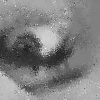Free Online Productivity Tools
i2Speak
i2Symbol
i2OCR
iTex2Img
iWeb2Print
iWeb2Shot
i2Type
iPdf2Split
iPdf2Merge
i2Bopomofo
i2Arabic
i2Style
i2Image
i2PDF
iLatex2Rtf
Sci2ools
ICIP
2003
IEEE
2003
IEEE
Inverse halftoning by decision tree learning
Inverse halftoning is the process to retrieve a (gray) continuous-tone image from a halftone. Recently, machinelearning-based inverse halftoning techniques have been proposed. Decision-tree learning has been applied with success to various machine-learning applications for quite some time. In this paper, we propose to use decision-tree learning to solve the inverse halftoning problem. This allows us to reuse a number of algorithms already developed. Especially, the maximization of entropy gain is a powerful idea that makes the learning algorithm to automatically select the ideal window as the decision-tree is constructed. The new technique has generated gray images with PSNR numbers, which are several dB above those previously reported in the literature. Moreover, it possesses very fast implementation, lending itself useful for real time applications.
ICIP 2003 | Image Processing | Inverse Halftoning | Inverse Halftoning Problem | Inverse Halftoning Techniques | Real Time Applications | Various Machine-learning Applications |
| Added | 24 Oct 2009 |
| Updated | 27 Oct 2009 |
| Type | Conference |
| Year | 2003 |
| Where | ICIP |
| Authors | Hae Yong Kim, Ricardo L. de Queiroz |
Comments (0)

